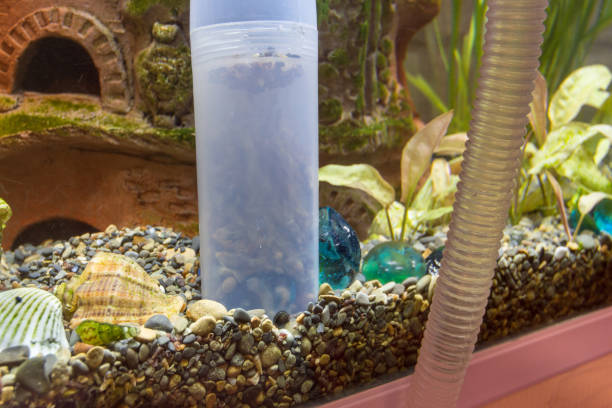For many aquatic enthusiasts, having a flourishing aquarium is the stuff of dreams. A captivating and peaceful atmosphere is created by pure water, colorful fish, and rich plant life. Filtration is essential for creating and maintaining such an ecosystem. The effectiveness and adaptability of a canister filter make it stand out among the other filtration alternatives. You can find instructions for making a homemade canister filter for aquariums in this post.
What is a Canister Filter?
Canister filter an external filtration system effectively eliminates debris, toxins, and other impurities from water to provide your aquatic pets with a clean and safe environment. It comprises a canister that is sealed off and filled with different filtration media, including mechanical, biological, and chemical media. The canister receives water from the aquarium, filters it through the media, and then returns the water to the aquarium.
Advantages of a Homemade Canister Filter
Creating your own canister filter offers several benefits:
1. Cost-Effective: Commercial canister filters might be pricey. However, they are cost-effective. You can save money by creating your own DIY version and have the same filtration performance.
2. Customizable: You have the option to select the filtration media that best meets the requirements of your aquarium, allowing you greater control over the filtering procedure.
3. Educational and Fun: Building a DIY canister filter is an entertaining and instructive hobby that enables you to gain more knowledge about aquarium filtration.
Materials Required
Before we dive into the step-by-step process, gather the following materials:
1. Pick an airtight container – a strong, sealed lid that fits snugly. The volume of your aquarium and the available space decide the size and style.
2. For the construction of the intake and outflow for the water flow, PVC pipes and fittings are required. PVC pipes are frequently utilized because they are durable and simple.
3. Choose a combination of mechanical, biological, and chemical media for filtration. Foam pads, ceramic rings, activated carbon, and filter floss are typical replacements.
4. Water Pump– Depending on the size of your tank and the desired flow rate, choose a water pump for your aquarium.
5. Silicone Sealant– Use silicone sealant to create a watertight barrier around the PVC connectors.
6. Use a hose and clamps to secure the object.
7. Drill and Hole Saw – To make holes in the canister for the PVC pipes and other fittings, use a hole saw and a drill.
8. Sponge or prefilter – use to prevent particles from clogging the canister filter.
Step-by-Step Guide
1. Design the Layout: Plan the location of the canister filter and the PVC pipes’ and fittings’ configuration. Make sure the aquarium water is in the intake and the exit empties the filtered water back into the tank.
2. Prepare the Canister: To fit the PVC pipes and other fittings, drill holes in the canister. Create watertight sealing all around the holes with the silicone sealant.
3. Assembly: Attach the PVC pipes and fittings. To stop big particles from entering the canister, place the prefilter or sponge near the input.
4. Add Filtration Media: In the canister, arrange the filtration material in layers as directed by the manufacturer. Typically, the order is mechanical, then biological, then chemical media.
5. Connect the Pump: Using a hose and clamps, connect the water pump to the outflow pipe. Verify that the pump’s rating corresponds to the size of your tank.
6. Test Run: Start the filter after adding water to the canister and priming the pump if necessary. Look for any leaks, then change the flow rate to suit your tastes.
7. Install and Monitor: Place the canister filter in the recommended location close to the aquarium and check on it frequently. As required, clean and replace the filtration media.
Conclusion
By building your own homemade canister filter, you not only save money but also gain a better understanding of your aquarium’s filtration needs. A well-maintained canister filter will significantly improve the water quality, providing a healthy and vibrant environment for your aquatic friends to thrive. Remember to perform routine maintenance and enjoy the fruits of your DIY labor as you observe your aquarium flourish with life. Happy fish keeping!

